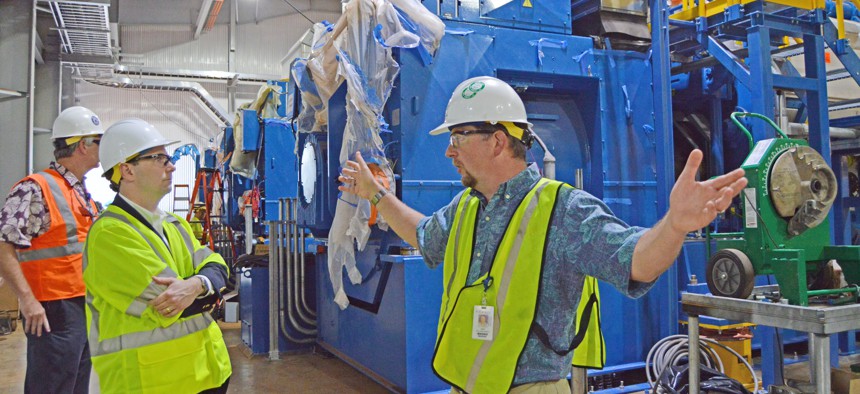
Army installations are reliant on commercial companies to provide them with electricity and water, but that utility infrastructure is vulnerable to natural disasters and threats like the recent Colonial pipeline cyberattack. Schofield Barracks in Hawaii recently tested its ability to overcome such a threat by using a generation station to provide energy to local bases; however, most Army installations do not have this capability.
The Army and the local power company Hawaiian Electric tested the Schofield Generating Station on May 22 by taking Schofield Barracks, Wheeler Army Airfield, and Field Station Kunia off the local power grid and isolating them to the station. It took about two hours to get power back to the bases, Maj. Gen. James Jarrard, the commander of the 25th Infantry Division and U.S. Army Hawaii, said during a call with reporters Wednesday.
“In the event of an emergency where power is lost, Schofield Barracks and U.S. Army Hawaii can be back up and running in just a matter of hours. This enables us to support the state of Hawaii if requested to provide defense support to civil authorities,” he said.
The station test was done over a 36-hour period before the installations were put back on the local grid, according to a Hawaiian Electric statement.
The generation station operates on 100 percent biodiesel that is distilled in Hawaii, and it is the only power station located away from the coastal area, Jarrard said. While the station is located on the Army installation, it is operated by the local utility company.
There are few other installations that have large microgrid capability like Schofield Barracks, said Jack Surash, the senior official performing the duties of the assistant secretary of the Army for installations, energy, and environment. Most have backup generators for each building that can be used during an outage, he said.
Fort Drum in New York is one other base that does have this capability, with a biomass generation facility that can provide the electricity the installation needs. If there is an outage, Fort Drum can operate for more than a month off of the local grid with the biomass stored on the site, according to the Army’s office of energy initiatives.
The Army’s installation strategy released in December calls for “Army energy and water systems will be resilient, cyber-secure, and efficient.” Having assured power on Army installations is one part of the strategy, Surash said, and that will be a focus for the service over the next 15 years.
While the Army is trying to make its installations more resilient against natural disasters, physical threats, and cyberattacks, each one faces its own unique situation the Army officials said. So far, only a handful of installations under the Army’s Installation Management Command can meet a goal established a few years ago to operate off the electric grid for at least two weeks, Gregory Kuhr, the director of facilities and logistics with the command said during the call.
All Army installations are developing plans that aim to meet the “default” 14-day requirement, Kuhr said. However, Surash added that the actual number of days is now determined by local garrison commanders.
When installations achieve their resiliency goal and how they do it will be based on their state and local utility capabilities as well as their mission set, with the focus going to bases that project forces, such as Hawaii and Fort Bragg in North Carolina, Surash said.
“I would love to have all 133 Army installations done in a 12-month period, but it's going to take a number of years to actually get at this. But we're going to go at it in a priority fashion,” he said.
In the meantime, the Army is learning how to best address and overcome power outages at its installations. About half a dozen installations have gone through a “black start” exercise that purposely cuts them off from the grid for eight to 12 hours to learn about the electrical needs of facilities and how to get power back up, Surash said.
No comments:
Post a Comment